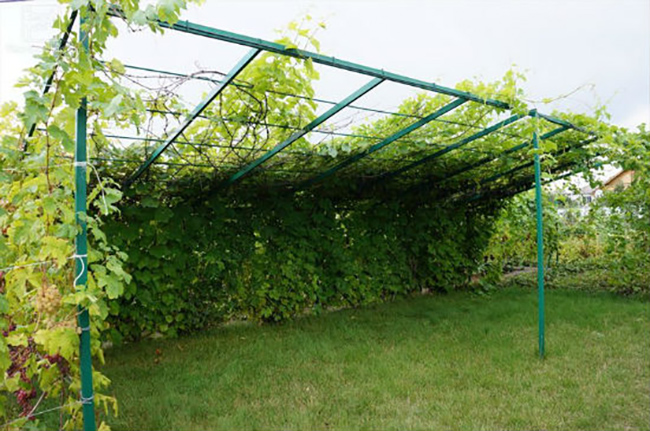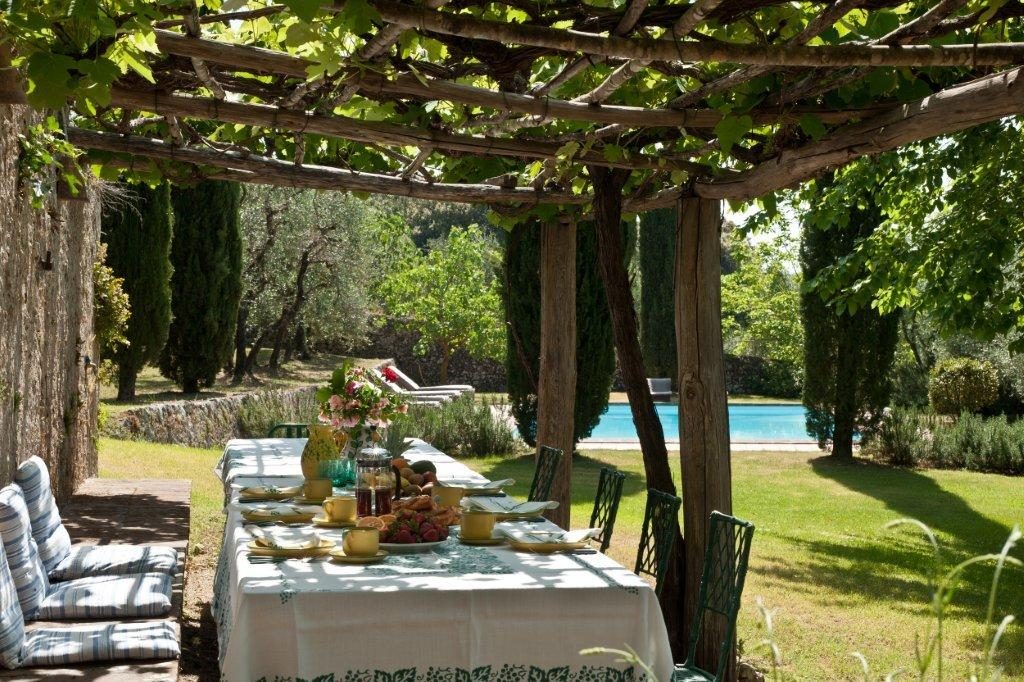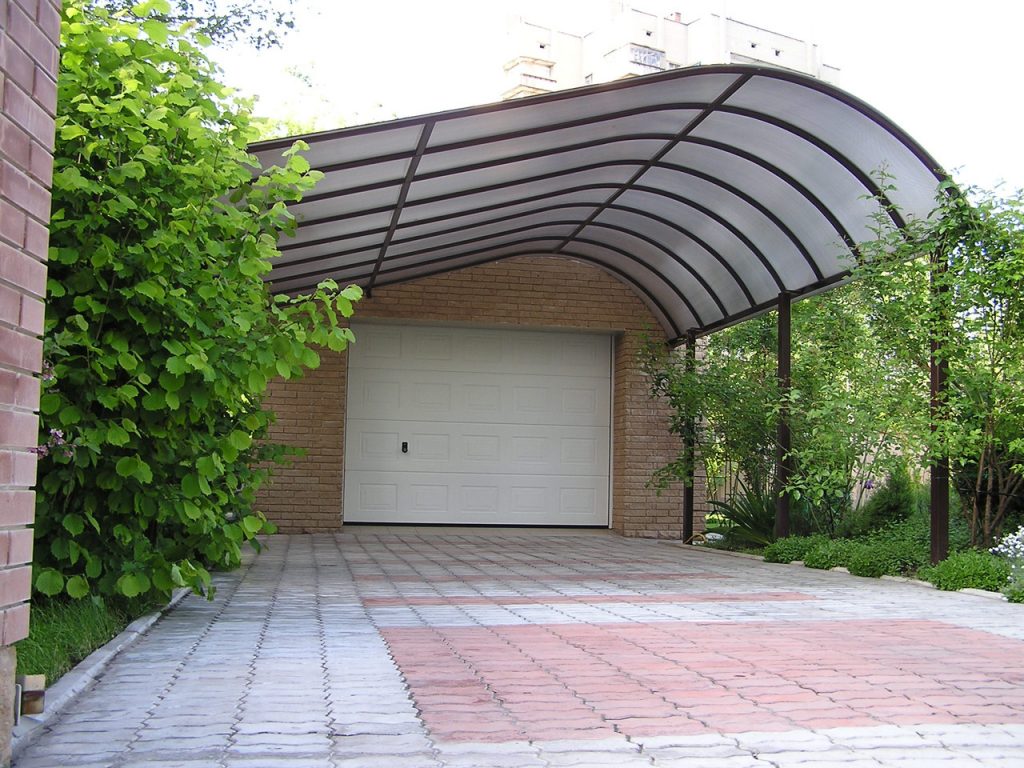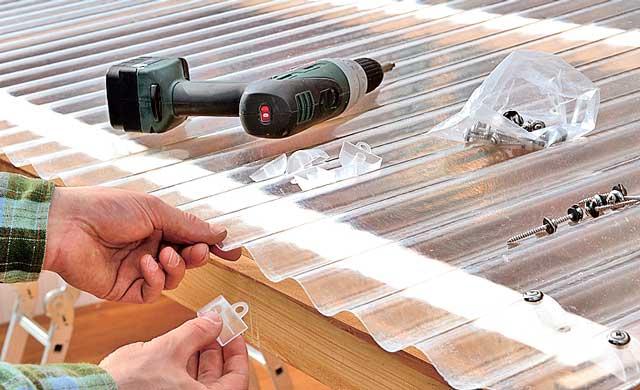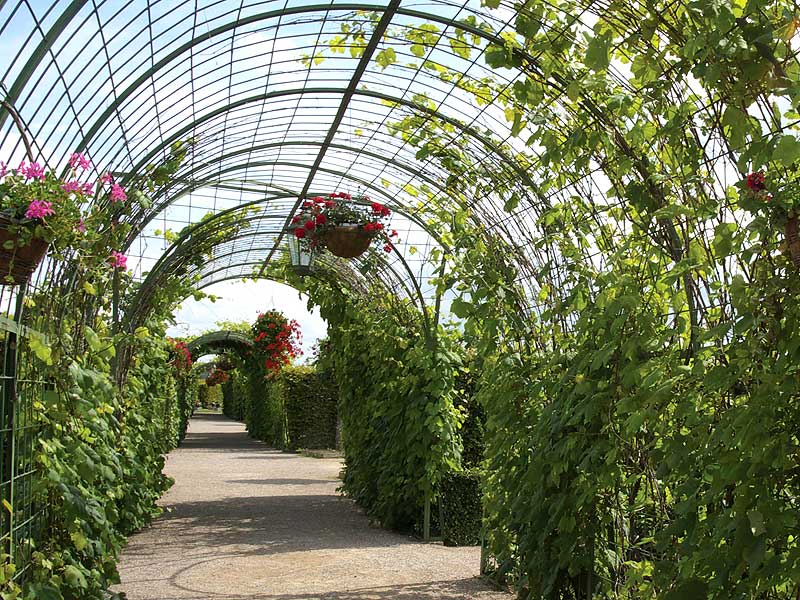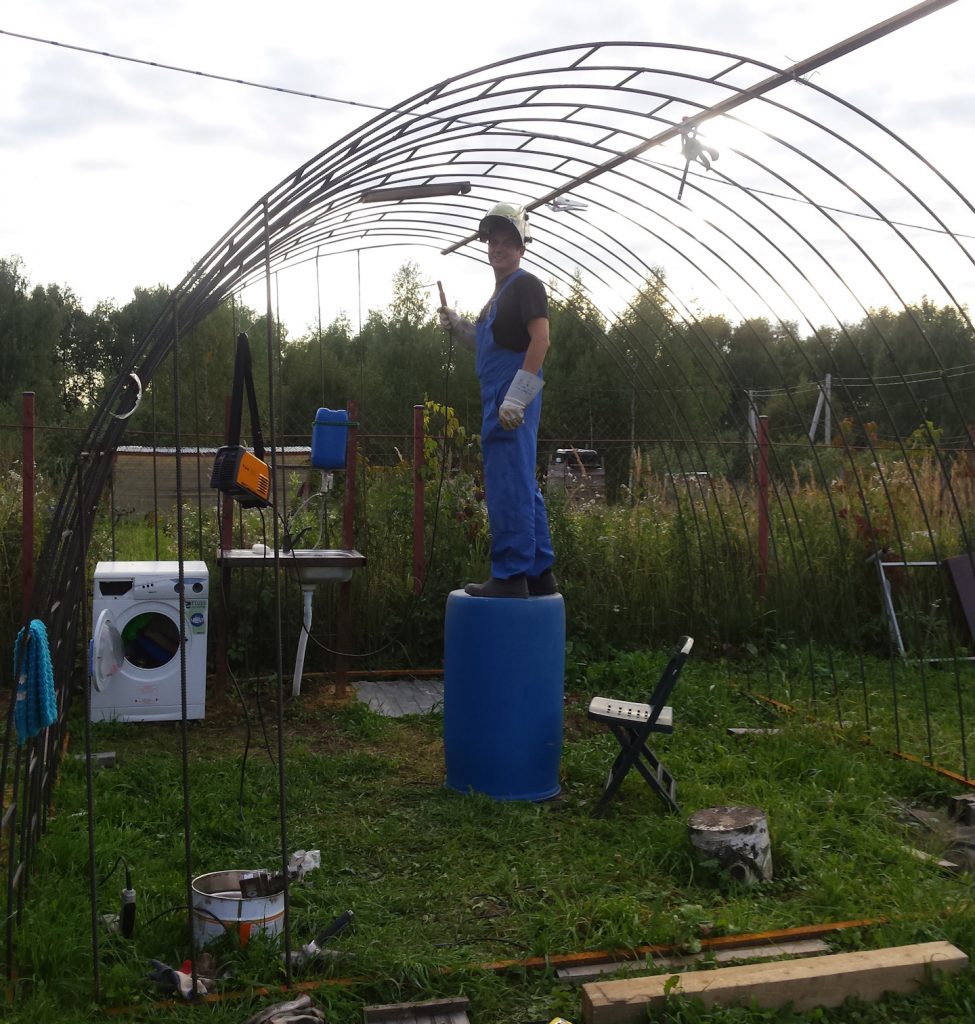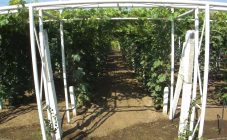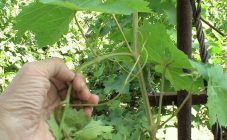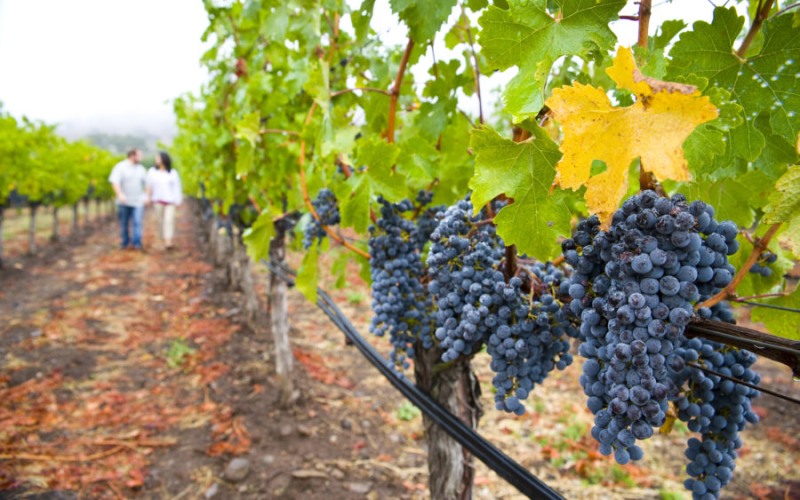Arrangement of an adjoining plot or summer cottage is an exciting and creative process. The grape support structure is a versatile solution. This is usefulness, decorativeness, and comfort. The yard will get a well-groomed look, the vineyard will not take up extra space in the garden. A gazebo entwined with a vine, or a canopy that gives shade in the heat will adorn any territory. They look much more aesthetically pleasing than conventional canopies made of building materials (tiles, polycarbonate or awning).
What are the awnings
By the type of structures, canopies are oblique, welded, arched. You can also build a wooden gazebo. Each option has its pros and cons, and the material can also be used in different ways.
- Welded construction - reliable and durable support. It will not require repair, painting, tightening and alteration. But the weight of the structure is very impressive, so a powerful support is required. Over time, a grown vineyard (especially with a ripening crop) will add its weight. Therefore, the lower part of the supports will need to be concreted. For the construction of this type of canopy, a welding machine is needed. A significant disadvantage of such a structure is its high cost.
- Oblique canopies at one end adjoin a house or other building. The structure can be built in the form of a gazebo or a corridor. The second option is to build faster and cheaper. Since one side of the canopy rests on the wall, it remains to build the second and connect them with jumpers. In relation to the house, the visor is at an angle of 45o. It is possible to make a lintel not from metal, but from a garden mesh, 40 cm wide. This will reduce the weight of the structure and costs, and facilitate the installation process. The grapes weave well on the net. But such a canopy will not last long.
- Arched vine sheds are very popular and aesthetic. Despite the apparent complexity of this design, it is not so difficult to build it. However, the arcs are bought ready-made, which is very expensive. In principle, you can use a bent metal profile instead, but this method is not reliable. Metal supports are mounted on a columnar foundation. The disadvantage of this method is that the vine will need to be guided along the top of the arch, since hanging branches will spoil the view and create inconvenience when collecting bunches. Therefore, such a design requires constant plant care. Often the sides of arched canopies are made not of iron, but of wooden columns.
- The simplest, cheapest, but short-lived option is to make crossbars and jumpers from ordinary wire or flexible rods. This option will take a minimum of time, effort and money to manufacture. But every year you will have to pull on and periodically replace the wire. It will sag constantly under heavy bunches of grapes.
- The gazebo, made of wood, is the central part of the recreation area and the decoration of any yard. You can buy a ready-made frame or make a structure yourself. The construction does not require much skill or any professional tools. The floor can be filled with concrete or made of wood. But it is recommended to raise it above the ground, as rainwater will quickly destroy the structure. The walls can be either open or solid. The brazier should be located as far from the gazebo as possible, since wood is a fire hazardous material, the heat can harm the grapes. The disadvantage of a wooden structure is its low service life.Boards will need to be constantly tinted, replaced or repaired.
It is important to choose a grape variety for a canopy or a gazebo that does not need shelter for the winter. This is a different variety for each region. The most popular varieties for canopy are Isabella, Lydia, Concord and Alpha. These plants are unpretentious and can grow in both sun and shade.
Polycarbonate canopy
Building a canopy for grapes from metal with your own hands is not an easy task. This will require at least minimal experience with metal and a lot of patience. If you make a polycarbonate canopy on top, it will be a growers' dream - a shelter for a vine.
The first step is to determine the dimensions and draw a drawing based on them.
To build a canopy you will need:
- shaped square pipes;
- steel pipes for support;
- polycarbonate (honeycomb or cast);
- cement, screenings, sand.
So, the first step is to prepare a place for the supports, for which vegetation is removed on the site. After that, the surface must be leveled and the boundaries of the future building must be marked with pegs and ropes. Next, you need to dig a trench, fill it with a sand pillow and install supports. Make the formwork, prepare the mortar and fill the trench with it. The concrete will dry for about 4 days, while it needs to be watered periodically. After that, the strapping of the supports is made on top. Next, the polycarbonate is cut with a hacksaw with a small margin. A docking profile is attached to the crate, and polycarbonate is attached to it.
Even thin sheets of polycarbonate can withstand a layer of snow, so it is not necessary to choose thick and expensive material. The main thing in the design is the support. It should be as reliable as possible, then no snow will be terrible.
Arched canopy - budget option
An arched canopy can be made from cheaper materials than described above. For example, you can use iron pins for this. Such a structure will not stand for decades, but it will be built quickly. It will be better if decorative grapes are weaving on such a canopy. Since there is a risk that it will not withstand the bountiful harvest of heavy bunches.
For an arched canopy, you will need the following materials:
- metal rods;
- sand, cement, screenings;
- welding;
- wide boards, nails.
In order to make a canopy for grapes, you must first prepare a site of the required size. It is cleared of grass and leveled. Trenches for the foundation are dug from both sides of the future canopy. Their depth and width depend on the thickness and weight of the rods. If they are thin, then it is enough to make a trench 20-30 cm deep. Ballast in the form of medium-sized stones is placed on the bottom of the resulting pit. Next, you need to knead sand, cement and screenings with water in equal proportions. Make the formwork of the required size from the boards and install it in place. Pour the concrete evenly into the trench and level it with a trowel.
The next step is to prepare the rods for the future canopy. Those that go to the top of the arch bend. The reinforcement is installed in the hardened concrete and the base is completely hardened. After that, the arcs are welded to the vertical pins and horizontal bridges. At the end of the work, you can paint the structure with exterior paint from an aerosol can. The floor under such a canopy can be made of paving slabs or filled with concrete. You can just cover it with sand. Next, it remains to plant grape seedlings.
The choice of design and materials for the manufacture of a canopy depends on the personal preferences and capabilities of the owner of the site. Someone likes cozy wooden products, someone is interested in quality and durability, and for someone the financial side will be the decisive factor. In any case, a canopy is a good adaptation for viticulture, the investment, effort and time will not be wasted.
